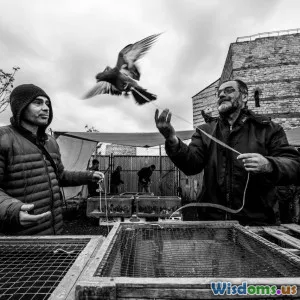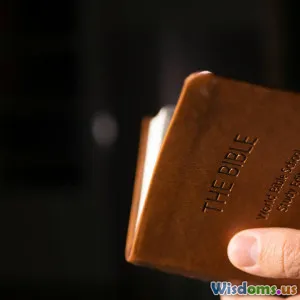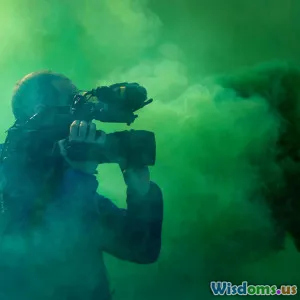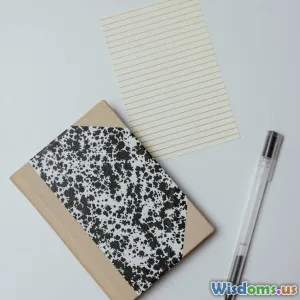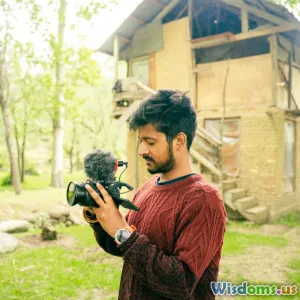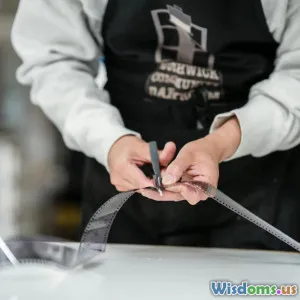
Ethical Boundaries in Documentary Narratives
8 min read Explore the ethical boundaries shaping documentary narratives in photography and filmmaking, highlighting responsible storytelling practices. (0 Reviews)
Ethical Boundaries in Documentary Narratives
Documentary narratives wield immense power: they shape perceptions, inform public opinion, and give a voice to the voiceless. But with such influence comes great responsibility. Photography and filmmaking have long been mediums through which raw realities are documented and shared, yet the ethical lines guiding these storytelling processes often blur. How far can a filmmaker go before they manipulate truth? What responsibilities do documentarians have toward their subjects and audiences? This article aims to dissect these complex ethical boundaries, providing insights on navigating the demands of authenticity, respect, and impact.
Understanding the Power of Documentary Storytelling
Documentary storytelling is distinct in its promise so often assumed by the audience: what they see and hear is fundamentally "real." This expectation imposes a moral obligation on creators to maintain truthfulness and integrity. Unlike fiction, documentaries seek to document actual people and events—often sensitive or controversial. A single image or scene can alter public opinion or affect a person's life profoundly.
For example, Dorothea Lange’s iconic 1936 photograph "Migrant Mother" during the Great Depression is more than a snapshot; it stirred compassion across the U.S. and influenced government aid. Similarly, documentaries like "Blackfish" (2013) have tangible impacts, sparking widespread debate on animal ethics and changing how theme parks manage captive orcas. The power of these narratives underscores why ethics matter so deeply.
Core Ethical Challenges in Documentary Narratives
Authenticity vs. Storytelling
One of the foremost challenges is balancing authentic representation with the need to craft a compelling narrative. Documentarians want to tell stories that engage viewers emotionally and intellectually, but in doing so, selective editing or framing may alter the context or distort reality.
Consider the controversy around "Nanook of the North" (1922), a pioneering documentary that staged scenes for dramatic effect while portraying Inuit life. Despite its historical significance, the film’s manipulations have led to ongoing debate about the legitimacy of re-enactments in documentaries.
Consent and Agency of Subjects
Filmmakers and photographers must navigate the delicate terrain of informed consent, especially when subjects are vulnerable. Consent isn't merely a signed release—it's an ongoing ethical commitment to respect participants’ dignity and wishes.
For instance, Emmy Award-winning documentary "The Act of Killing" (2012) challenges ethical norms by featuring perpetrators of mass killings reenacting their crimes. While the film has been praised for its innovative approach, it raised questions about potential harm and whether it retraumatizes victims indirectly.
Avoiding Exploitation and Stereotyping
Misrepresentation, exoticization, or exploitation of subjects—particularly marginalized communities—remains a critical concern. Ethically sensitive storytelling aims to empower rather than perpetuate harmful tropes or reduce individuals to mere symbols.
As Nigerian filmmaker Onyeka Nwelue points out, "Documentaries should not ‘poverty-porn’ the subject but present them with complexity and nuance."
Manipulation Through Editing and Framing
The power to shape viewers’ perceptions rests heavily on decisions made in the editing room. Manipulating footage to create misleading impressions breaches trust and erodes credibility.
An infamous example is the "ABC’s Cutting Edge" incident in 1997 when a documentary on Marion Barry, former mayor of Washington D.C., aired heavily edited footage suggesting criminal activity, which Barry later argued was taken out of context. Such cases expose the thin line between framing facts and fabrication.
Best Practices: Navigating Ethical Boundaries
Transparency and Reflexivity
Documentarians must be transparent about their approach and limitations. By including reflexive moments, filmmakers can acknowledge their perspective and biases, helping audiences understand the constructed nature of narratives.
BBC’s "The Act of Killing" openly reveals its own challenging process, interrogating the role of representation itself.
Prioritizing the Welfare of Subjects
Ensuring subjects understand how their stories will be used and the potential repercussions is crucial. This fosters trust and aligns documentary intentions with participants’ welfare.
Organizations like the International Documentary Association provide ethical guidelines emphasizing participants’ autonomy and care.
Maintaining Fact-Checking and Integrity
Rigorous fact-checking safeguards the truth. Documentarians must verify information and avoid sensationalism just to boost engagement.
For example, Netflix’s take on true crime series like "Making a Murderer" has enabled dialogues on justice reforms but also sparks debate on selective storytelling biases, compelling filmmakers to commit to accuracy.
Cultural Sensitivity and Avoiding Harm
Respect for cultural context and local customs strengthens documentary credibility and minimizes harm. Collaborating with local communities and experts ensures respectful representation.
Acclaimed documentary "Honeyland" (2019) exemplifies how immersive and sensitive portrayal can illuminate environmental themes without exploitation.
Contemporary Ethical Debates
The Role of AI and Deepfakes
Artificial intelligence and deepfake technologies are emerging as new challenges—posing risks for manipulation undermining trust in documentary authenticity. Journalists and filmmakers must navigate how to integrate these tools responsibly.
Privacy and Surveillance
As drones and hidden cameras become more accessible, the boundary between public interest and privacy invasion tightens. Ethical guidelines on unobtrusive filming regulate this tension.
Conclusion: Charting a Responsible Documentary Future
Ethical boundaries in documentary narratives form the backbone of credible and impactful storytelling. Creators who approach their craft with a deep awareness of consent, accuracy, cultural sensitivity, and respect for subjects ensure documentaries uplift rather than exploit.
In an age of information overload, documentaries have a vital role in truth-telling. Upholding ethical standards not only preserves their legitimacy but also mobilizes audiences to engage thoughtfully with complex realities. Ultimately, ethical filmmaking is about honoring the dignity of every story told and fostering trust between storytellers, subjects, and viewers alike.
References
- Lange, Dorothea, "Migrant Mother", 1936.
- "Nanook of the North", Robert J. Flaherty, 1922.
- "The Act of Killing", Joshua Oppenheimer, 2012.
- Onyeka Nwelue, Nigerian filmmaker interviews on ethical storytelling, 2020.
- International Documentary Association, Code of Ethics.
- "Honeyland", Tamara Kotevska and Ljubomir Stefanov, 2019.
Embrace documentarian ethics—it safeguards truth and deepens impact in the visual chronicles that define our world.
Rate the Post
User Reviews
Popular Posts













